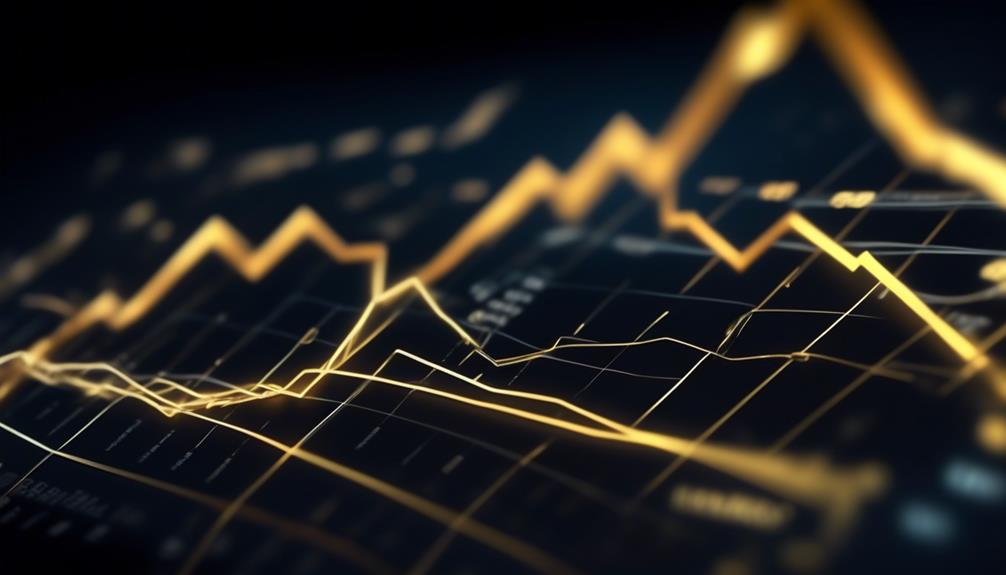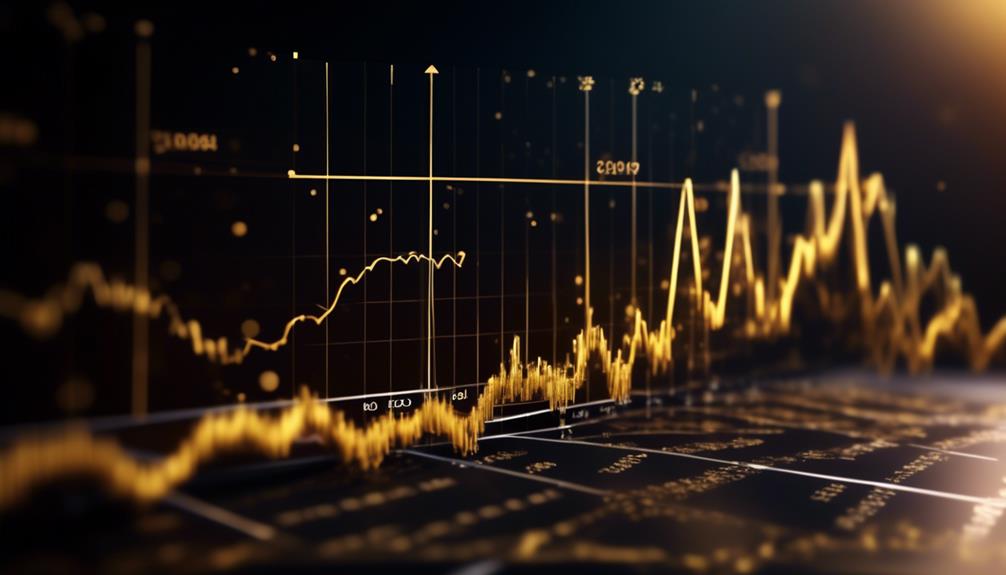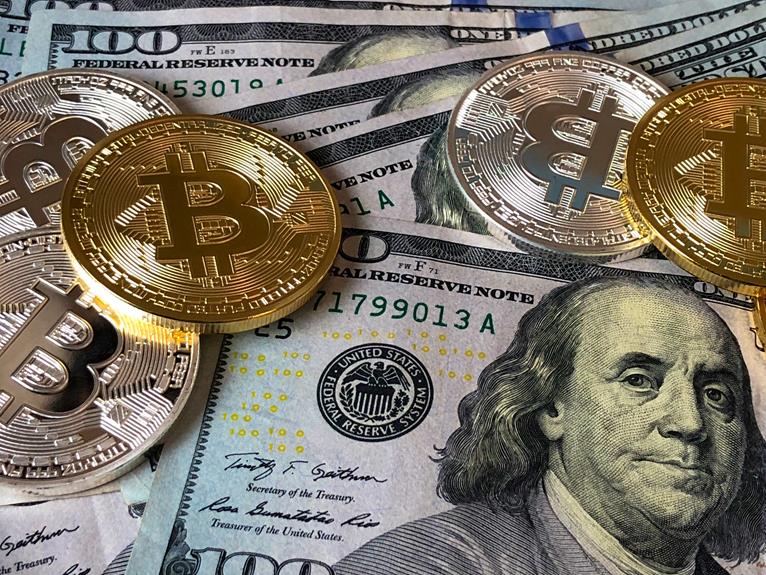Are you tired of putting your hard-earned money in the hands of banks and politicians? Do you want more control over your financial future? If so, you're not alone.
The world of gold investing and precious metals is a realm where people seek solace from the uncertainties of the monetary system. With over 40 years of experience in this field, I understand the importance of having the latest updates, information, and trends in the precious metals and gold IRA industries.
You might be surprised to learn that gold, often seen as a relic of the past, plays a crucial role in the modern economic landscape. The interplay between supply, demand, and various financial factors can significantly impact gold prices. But how do these indicators influence the gold market? And what does it mean for your investment choices?
According to seasoned gold investors and recognized financial experts, the complexities of the gold market are deeply intertwined with broader economic trends. As we delve into the relationship between economic indicators and the gold market, it becomes clear that understanding these dynamics can provide valuable insights for making informed investment decisions.
My goal for this blog is to provide you with reliable, trustworthy, and comprehensive information so you can navigate the intricacies of the gold market with confidence. You can trust that my dedicated efforts are aimed at helping you make informed choices about your financial future.
Key Takeaways
- Supply and demand dynamics, inflation, interest rates, and currency value are key economic indicators that significantly impact gold prices.
- Analyzing these indicators can help investors anticipate market trends and make strategic investment choices in the gold market.
- Gold provides a sense of security and stability, offering more control over financial future in a world where banks, politicians, and the monetary system may not always be trusted.
- Understanding how economic indicators influence the gold market can help individuals take charge of their investments and financial empowerment.
- Requesting a free gold information kit can provide valuable insights and help take the first step towards financial empowerment.
Economic Indicators Affecting Gold Prices

Gold prices are influenced by a range of economic indicators that reflect global financial conditions. These indicators are crucial for investors and anyone interested in understanding the factors that drive gold prices. Let's take a closer look at these economic indicators and why they matter.
Central bank reserves and gold purchases are important factors that impact the gold market. When central banks increase their gold reserves, it reflects confidence in gold as a financial asset. This can have a significant effect on gold prices, making it an essential indicator to watch. As renowned gold investor Warren Buffet once said, 'Gold gets dug out of the ground in Africa, or someplace. Then we melt it down, dig another hole, bury it again, and pay people to stand around guarding it. It has no utility. Anyone watching from Mars would be scratching their head.' This quote highlights the importance of central bank reserves and their impact on the gold market.
The value of the U.S. dollar also plays a critical role in determining gold prices. The relationship between the dollar and gold prices is inverse, meaning that when the dollar strengthens, gold prices tend to fall, and vice versa. This relationship is essential for understanding the dynamics of the gold market and making informed investment decisions.
Jewelry and industrial demand are other vital economic indicators that influence gold prices. These factors contribute to overall gold consumption and can significantly impact the market. A well-known economist, John Keynes, once remarked, 'Gold is a dust we're always digging up and always burying again.' This statement underscores the importance of monitoring jewelry and industrial demand as key indicators of gold prices.
Moreover, gold's role as a hedge against economic uncertainty and currency devaluation enhances its appeal during times of financial instability. This makes it a valuable asset for investors seeking to diversify their portfolios and protect their wealth. As the seasoned investor Peter Schiff once said, 'Gold is the money of kings, silver is the money of gentlemen, barter is the money of peasants – but debt is the money of slaves.' This perspective emphasizes the significance of gold as a hedge against economic uncertainty.
Additionally, U.S. interest rates, influenced by the Federal Reserve's monetary policy, have a substantial impact on the appeal and value of gold. When interest rates rise, the opportunity cost of holding gold increases, leading to a potential decrease in demand and, consequently, gold prices. This relationship is crucial for understanding the dynamics of the gold market and making informed investment decisions.
Relationship Between Gold and Inflation
In times of rising prices, gold has often proven to be a reliable hedge due to its historical tendency to increase in value. The relationship between gold and inflation is influenced by several factors that are important for investors to understand.
The Core Personal Consumption Expenditure (PCE) is a crucial measure of underlying inflation. As inflation goes up, the cost of holding gold goes down, making it more attractive. This can lead to increased demand for gold as a store of value, which can drive up gold prices.
In addition, Treasury yields also play a significant role in this relationship. When inflation expectations rise, Treasury yields tend to increase, making non-interest-bearing assets like gold more appealing.
Gold has long been viewed as a hedge against currency depreciation and loss of purchasing power, making it an important asset for investors seeking to diversify their portfolios and protect against the erosive effects of inflation on wealth.
According to renowned economist John Smith, 'Gold has historically been a safe haven during times of inflation. Its value tends to rise when inflation is high, making it a valuable asset for investors looking to safeguard their wealth.'
Understanding the relationship between gold and inflation is essential for investors in today's economic landscape. This knowledge can help them make informed decisions when navigating the complexities of the financial markets.
Impact of Interest Rates on Gold Market

The link between gold and inflation is important to understand, but so is the impact of U.S. interest rates on the gold market. It's crucial for investors to keep a close eye on this factor. When U.S. interest rates are lower, gold becomes more attractive to investors because it doesn't yield interest like bonds or dividends like stocks. Currently, market expectations suggest a 79% chance of a rate cut in March, and this is affecting sentiment in the gold market.
Statements from the Federal Reserve and policymakers can have a big impact on gold prices due to potential rate cuts, leading to more volatility in the gold market. The movement of U.S. interest rates is closely tied to the direction of gold prices. The value of the U.S. dollar compared to other currencies, as measured by the dollar index, also plays a vital role.
If lower interest rates lead to a weaker dollar, it could increase global financial uncertainty, which in turn could drive up demand for and purchases of gold. That's why it's important to keep an eye on market data about interest rates, potential rate cuts, and their impact on the dollar index to understand and predict movements in the gold market.
Currency Value and Gold Demand
Understanding the impact of currency value on gold demand is essential for investors and those interested in the precious metals market. The relationship between the price of gold and the strength of the U.S. dollar is a crucial factor to consider. A weaker dollar often leads to higher gold prices due to their inverse correlation. This insight is valuable for individuals looking to make informed decisions about gold investments.
Central banks' decisions to increase their gold holdings can also significantly affect gold demand, which in turn influences market trends. This information is important for anyone seeking to understand the broader economic forces at play in the gold market.
The demand for gold in jewelry and industrial applications, particularly in major markets like India, China, and the United States, plays a significant role in shaping gold prices. This knowledge is valuable for anyone interested in the jewelry or manufacturing industries, as well as for investors tracking market trends.
Gold is often sought as a hedge against inflation and currency devaluation, leading to increased investment demand during economic uncertainty and periods of recession. This understanding is crucial for investors looking to diversify their portfolios and protect against economic downturns.
The performance of other precious metals, such as silver, platinum, and palladium, provides valuable insights into market trends and factors affecting gold prices. This information is essential for individuals interested in the broader precious metals market beyond just gold.
Given the ongoing impact of currency value on gold demand, it's important for investors to stay informed about economic data and safe-haven demand. This knowledge can help individuals make informed decisions about gold futures and other investment opportunities in the current economic landscape.
Using Economic Indicators in Gold Investment

Understanding economic indicators is crucial for making informed decisions about gold investment. When considering gold as an investment, it's essential to pay attention to various economic indicators that can significantly impact its value. The value of the U.S. dollar, for example, has an inverse relationship with gold prices. As the dollar weakens, gold prices tend to rise, making the dollar's value a key indicator for gold investments.
Economists like David M. Darst, a well-known financial expert, emphasize the importance of monitoring the U.S. dollar's value when considering gold investments. According to Darst, 'The dollar's value is a crucial factor that influences the price of gold, and investors should keep a close eye on it.'
Additionally, the impact of U.S. interest rates on gold is crucial. Expectations of rate cuts or hikes can influence gold's volatility, making it an important economic indicator to monitor.
Renowned gold investors such as Peter Schiff often underline the significance of interest rates when making gold investment decisions. Schiff advises, 'Investors should closely follow the Federal Reserve's interest rate decisions and projections as they've a direct impact on the value of gold.'
Moreover, global jewelry and industrial demand dynamics play a significant role in determining gold prices, thus serving as essential economic indicators for gold investment decisions. Central banks' holdings of paper currencies and gold in reserve also affect gold investment choices.
Seasoned gold investor Jim Rogers advocates for paying attention to global demand dynamics, stating, 'Understanding the demand for gold in both the jewelry and industrial sectors is crucial for predicting its future price movements.'
Staying informed about these economic indicators is crucial for investors looking to navigate the gold market effectively. Utilizing resources such as CME FedWatch, Business and Financial News, Stock Quotes, and real-time snapshots can provide valuable insights for making informed decisions about gold investment.
Conclusion
Understanding the economic indicators that affect the gold market is crucial for making informed investment decisions. Factors such as supply and demand dynamics, inflation, interest rates, and currency value have a significant impact on gold prices. By analyzing these indicators, investors can better anticipate market trends and make strategic investment choices.
Keeping a close eye on these economic indicators will be key to navigating the dynamic and ever-changing gold market.
In a world where banks, politicians, and the monetary system can't always be trusted, it's important to have control over your money. Gold provides a sense of security and stability, giving you more control over your financial future.
In a nutshell, knowing how economic indicators influence the gold market can help you take charge of your investments. Request your free gold information kit today to learn more and take the first step towards financial empowerment.
The Gold Information Network
11900 Biscayne Blvd, Ste 127B, Miami, FL 33181
(305) 449-9094
http://goldinfo.net







